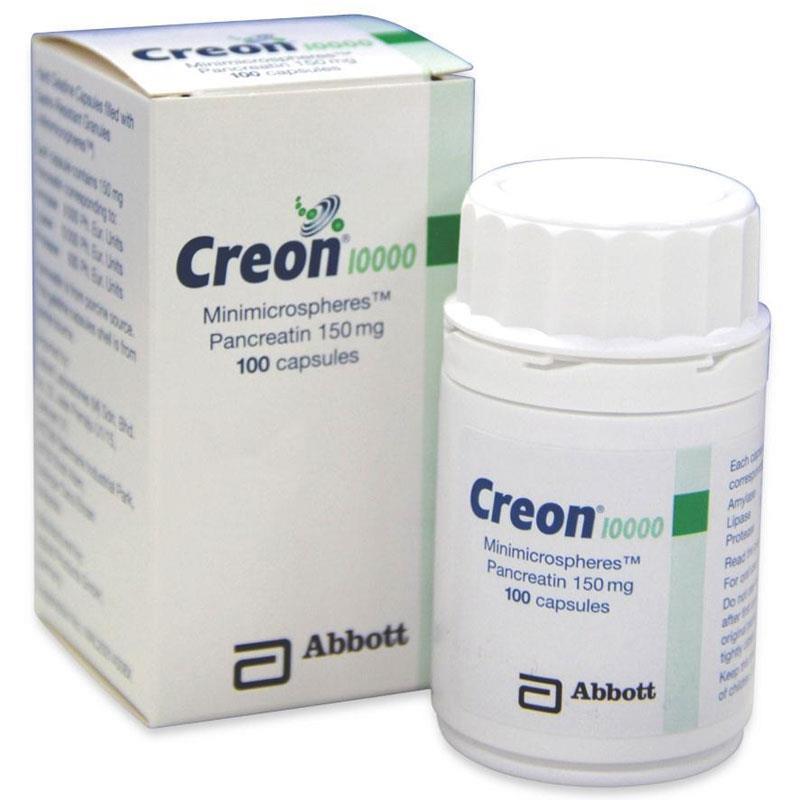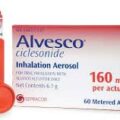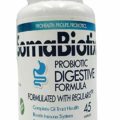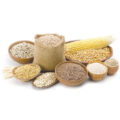Creon is a prescription medicine used to treat people who cannot digest food normally because their pancreas does not make enough enzymes due to cystic fibrosis, chronic pancreatitis (which is the swelling of the pancreas that lasts a long time), pancreatectomy (which is the removal of some or all of the pancreas).
Pancreatic enzymes, also known as pancreases or pancrelipase and pancreatin, are commercial mixtures of amylase, lipase, and protease. They are used to treat malabsorption syndrome due to certain pancreatic problems.
Reasons to Take Pancreatic Enzymes
Pancreatic insufficiency is the inability of the pancreas to secrete the enzymes needed for digestion. Having an insufficient amount of pancreatic enzymes is very common among people with pancreatic cancer. When the pancreas does not produce enough enzymes to break down food, pancreatic enzyme products are needed. Doctors sometimes prescribe digestive enzymes, including pancreatic enzymes, to patients who have conditions that cause poor absorption. These products help improve digestion and absorption of food. Some of the conditions that may cause pancreatic insufficiency include surgery (Whipple procedure or total pancreatectomy), blockage or narrowing of the pancreatic or biliary duct (the tubes that carry pancreatic juice or bile), pancreatic or duodenal tumors, cystic fibrosis or pancreatitis. Some of the symptoms associated with pancreatic enzyme insufficiency include:
- feelings of indigestion
- cramping after meals
- large amounts of gas
- foul smelling gas or stools
- floating or greasy/fatty stools
- light-colored, yellow or orange stools
- frequent stools
- loose stools
- weight loss
Patients with these symptoms should discuss with their medical team whether taking supplemental pancreatic enzymes may be beneficial for them.
How many should I be taking?
The enzymes are dosed off of the units of lipase (the enzyme that digests fat) and they come in different doses, depending on the brand. Enzymes are often dosed between 500-2500 units of lipase per kilogram (kg) per meal. Additionally, half of the meal dosage should be taken with snacks. Depending upon the brand, enzyme dosages vary. For instance, Creon comes in 3,000, 6,000, 12,000, 24,000, and 36,000 units of lipase per pill. Most people take the 24,000 dosed pills, but some people find them too large to swallow and prefer to take smaller pills. As an example of what an appropriate dose range would be, for an adult weighing 150 pounds, a range 34, 100 – 170,500 units of lipase per meal is appropriate. This would be between 1-5 pills per meal of the largest available dose, 36,000. As you can see, this is a large range and you need to work closely with your provider to assure you are taking the right amount.
How should they be taken?
Always take your enzymes as directed by your provider. Experts taking the entire dose directly before your meal, or with your first bite of food. The enzymes should be effective for up to one hour so if you eat later than one hour after taking your enzymes, you will need to take another dose. It is important that you do not store your enzymes in a warm place such as your pocket or in direct sunlight, as this can cause the medication to become ineffective.
Apart from Creon, there are five other alternative pancreatic enzymes approved by the FDA, which are available by prescription, they include;
Pancreaze
Pancreaze is a pancreatic enzyme preparation consisting of pancrelipase, an extract derived from porcine pancreatic glands. pancrelipase contains multiple enzyme classes, including porcine-derived lipases, proteases, and amylases. Each capsule for oral administration contains enteric-coated microtablets that are each approximately 2 mm in diameter. The Active ingredient evaluated in clinical trials is lipase. pancreaze is dosed by lipase units. other active ingredients include protease and amylase. Inactive ingredients in pancreaze include cellulose, colloidal anhydrous silica, crospovidone, magnesium stearate, methacrylic acid ethyl acrylate copolymer, montan glycol wax, simethicone emulsion, talc and triethyl citrate.
Pancreaze is available in four color coded strengths. Each pancreaze capsule strength contains the specified amounts of lipase, protease, and amylase as follows:
- 4,200 usp units of lipase; 10,000 usp units of protease; 17,500 usp units of amylase. the hard gelatin capsules have a yellow opaque body and clear cap imprinted with “mcneil” and “mt 4”. the capsule shell contains gelatin, titanium dioxide, sodium lauryl sulfate, sorbitan monolaurate, iron oxide, and gelatin capsule imprint ink.
- 10,500 usp units of lipase; 25,000 usp units of protease; 43,750 usp units of amylase. the hard gelatin capsules have a pink opaque body and clear cap imprinted with “mcneil” and “mt 10”. the capsule shell contains gelatin, titanium dioxide, sodium lauryl sulfate, sorbitan monolaurate, iron oxide, and gelatin capsule imprint ink.
- 16,800 usp units of lipase; 40,000 usp units of protease; 70,000 usp units of amylase. the hard gelatin capsules have a salmon opaque body and clear cap imprinted with “mcneil” and “mt 16”. the capsule shell contains gelatin, titanium dioxide, sodium lauryl sulfate, sorbitan monolaurate, iron oxide, and gelatin capsule imprint ink.
- 21,000 usp units of lipase; 37,000 usp units of protease; 61,000 usp units of amylase. the hard gelatin capsules have a white opaque body and cap imprinted with “mcneil” and “mt 20”. the capsule shell contains gelatin, titanium dioxide, sodium lauryl sulfate, sorbitan monolaurate, and gelatin capsule imprint ink.
Zenpep
Zenpep (pancrelipase) contains a combination of three enzymes (proteins): lipase, protease, and amylase. These enzymes are normally produced by the pancreas and are important in the digestion of fats, proteins, and sugars. Zenpep is used to replace these enzymes when the body does not have enough of its own. Certain medical conditions can cause this lack of enzymes, including cystic fibrosis, chronic inflammation of the pancreas, or blockage of the pancreatic ducts. Zenpep may also be used following surgical removal of the pancreas. You should not take Zenpep if you are allergic to pork proteins. Call your doctor at once if you have symptoms of a rare but serious bowel disorder: severe or unusual stomach pain, vomiting, bloating, diarrhea, or constipation.
Ultresa
Ultresa is a pancreatic enzyme preparation consisting of pancrelipase, an extract derived from porcine pancreatic glands. Pancrelipase contains multiple enzyme classes, including porcine-derived lipases, amylases, and proteases. Pancrelipase is a beige-white amorphous powder. It is miscible in water and practically insoluble or insoluble in alcohol and ether.
Each delayed-release capsule for oral administration contains enteric-coated beads (1.7 mm in diameter and 1.9 mm thick for 4,000 USP lipase units, approximately 2.0 mm in diameter and 2.0 – 2.4 mm thick for 13,800, 20,700, and 23,000 USP lipase units). The active ingredient evaluated in clinical trials is lipase. Ultresa is dosed by lipase units. Other active ingredients include protease and amylase.
Ultresa contains the following inactive ingredients: colloidal silicon dioxide, croscarmellose sodium, hydrogenated castor oil, hypromellose phthalate, magnesium stearate, microcrystalline cellulose, talc, and triethyl citrate.
- 4,000 USP units of lipase; 8,000 USP units of protease; 8,000 USP units of amylase. The hypromellose delayed-release capsules have a flesh opaque cap and blue opaque body, printed with “ULTRESA” on the cap and “4000” on the body in black ink. The capsule shell contains hypromellose, titanium dioxide, FD&C Blue 1, red iron oxide, and capsule imprint ink.
- 13,800 USP units of lipase; 27,600 USP units of protease; 27,600 USP units of amylase. The hard gelatin delayed-release capsules have a white cap and yellow body printed with “13800UL” on cap and “AXCA” on the body in black ink. The capsule shell contains gelatin, titanium dioxide, yellow iron oxide, and capsule imprint ink.
- 20,700 USP units of lipase; 41,400 USP units of protease; 41,400 USP units of amylase. The hard gelatin delayed-release capsules have a gray cap and white body printed with “20700UL” on cap and “AXCA” on the body in black ink. The capsule shell contains gelatin, titanium dioxide, black iron oxide, and capsule imprint ink.
- 23,000 USP units of lipase; 46,000 USP units of protease; 46,000 USP units of amylase. The hard gelatin delayed-release capsules have a light gray cap and yellow body printed with “23000UL” on cap and “AXCA” on the body in black ink. The capsule shell contains gelatin, titanium dioxide, yellow iron oxide, black iron oxide, and in capsule imprint ink.
The black radial imprinting on the capsule contains iron oxide black as colorant, shellac, and propylene glycol. It may also contain strong ammonia solution, and potassium hydroxide.
Viokace
Viokace is a pancreatic enzyme preparation for oral administration consisting of pancrelipase, an extract derived from porcine pancreatic glands. Pancrelipase contains multiple enzyme classes, including porcine-derived lipases, amylases, and proteases. Pancrelipase is a beige-white amorphous powder. It is miscible in water and practically insoluble in alcohol.
The active ingredient evaluated in clinical trials is lipase. VIOKACE is dosed by lipase units. Other active ingredients include protease and amylase.
Inactive ingredients in VIOKACE include: colloidal silicon dioxide, crosscarmellose sodium, lactose monohydrate, microcrystalline cellulose, stearic acid and talc.
10,440 USP units of lipase; 39,150 USP units of protease; 39,150 USP units of amylase tablets are tan, round biconvex and have VIO9111 engraved on one side and 9111 on the other side.
20,880 USP units of lipase; 78,300 USP units of protease; 78,300 USP units of amylase tablets are tan, oval, biconvex with V16 engraved on one side and 9116 on the other side.
Pertzye.
Pertzye is a pancreatic enzyme preparation consisting of pancrelipase, an extract derived from porcine pancreatic glands. Pancrelipase contains multiple enzyme classes, including porcine-derived lipases, proteases, and amylases.
Pancrelipase is a beige-white amorphous powder. It is miscible in water and practically insoluble or insoluble in alcohol and ether. Each Pertzye delayed-release capsule for oral administration contains bicarbonate-buffered enteric-coated microspheres ranging in size from 0.8 to1.4 mm in diameter for 4,000 USP units of lipase and 0.8 to 2.2 mm in diameter for 8,000 and 16,000 USP units of lipase.
The active ingredient evaluated in clinical trials is lipase. PERTZYE is dosed by lipase units. Other active ingredients include protease and amylase.
Inactive ingredients in PERTZYE include sodium bicarbonate, sodium carbonate, cellulose acetate phthalate, sodium starch glycolate, diethyl phthalate, ursodiol, polyvinylpyrrolidone, and talc and are contained in hard gelatin capsules.
4,000 USP units of lipase; 14,375 USP units of protease; 15,125 USP units of amylase. Delayed-Release Capsules have a clear body printed in green with “4” and a clear cap printed with a green circular stripe and “DCI”. The imprinting ink on the capsule contains FD&C Blue #1, D&C Yellow #10, black iron oxide, dehydrated alcohol, isopropyl alcohol, butyl alcohol, propylene glycol, shellac and ammonium hydroxide.
8,000 USP units of lipase; 28,750 USP units of protease; 30,250 USP units of amylase. Delayed-Release Capsules have a clear body printed in blue with “8” and a clear cap printed with a blue circular stripe and “DCI”. The imprinting ink on the capsule contains FD&C Blue #1, ethanol, methanol, n-butyl alcohol, propylene glycol, shellac and ammonium hydroxide.
16,000 USP units of lipase; 57,500 USP units of protease; 60,500 USP units of amylase. Delayed-Release Capsules have a clear body printed in red with “16” and a clear cap printed with a red circular stripe and “DCI”. The imprinting ink on the capsule contains FD&C Red #40, povidone, titanium dioxide, dehydrated alcohol, sodium hydroxide, butyl alcohol, propylene glycol, isopropyl alcohol, and shellac. SEE: SomaBiotix Reviews of Side Effects





